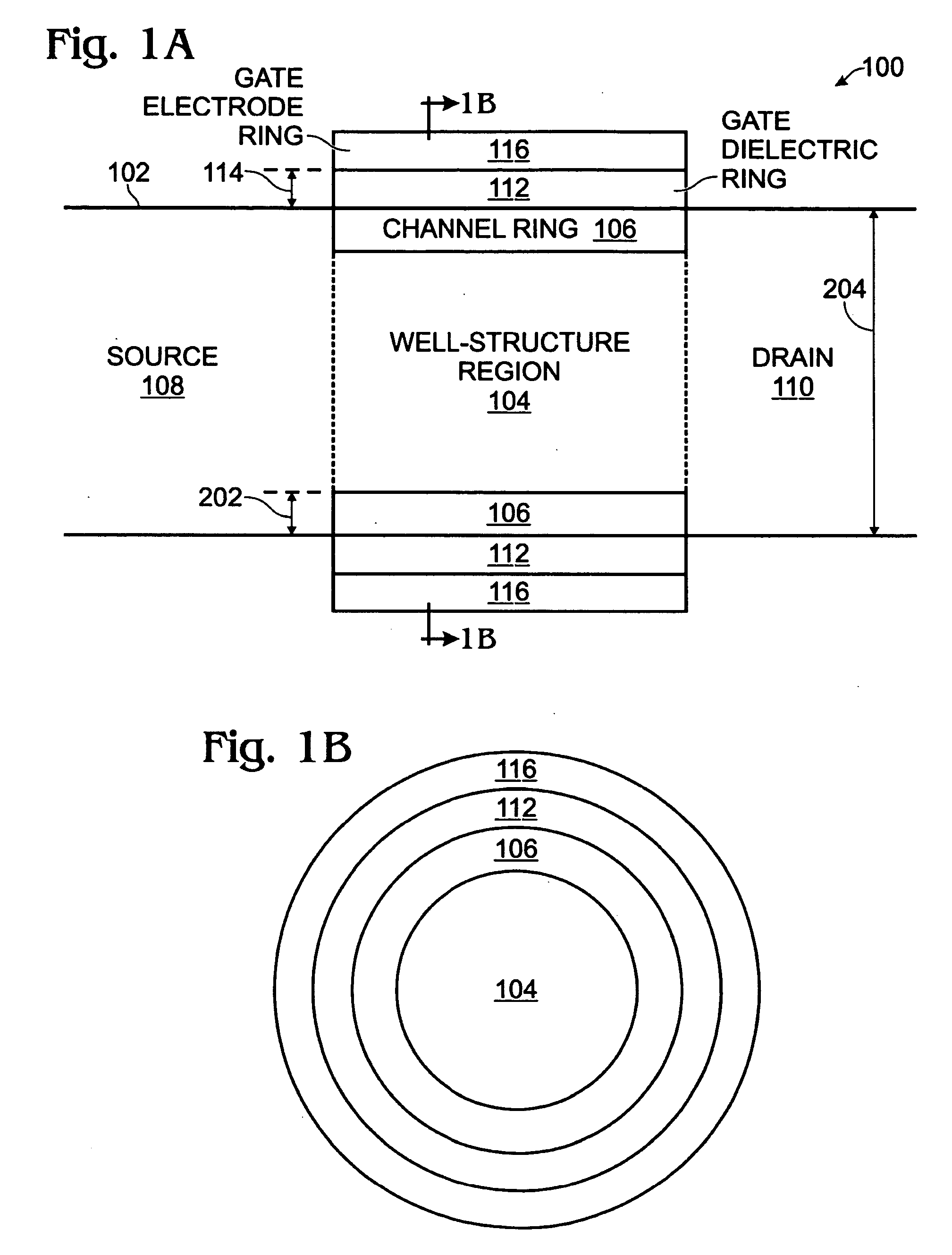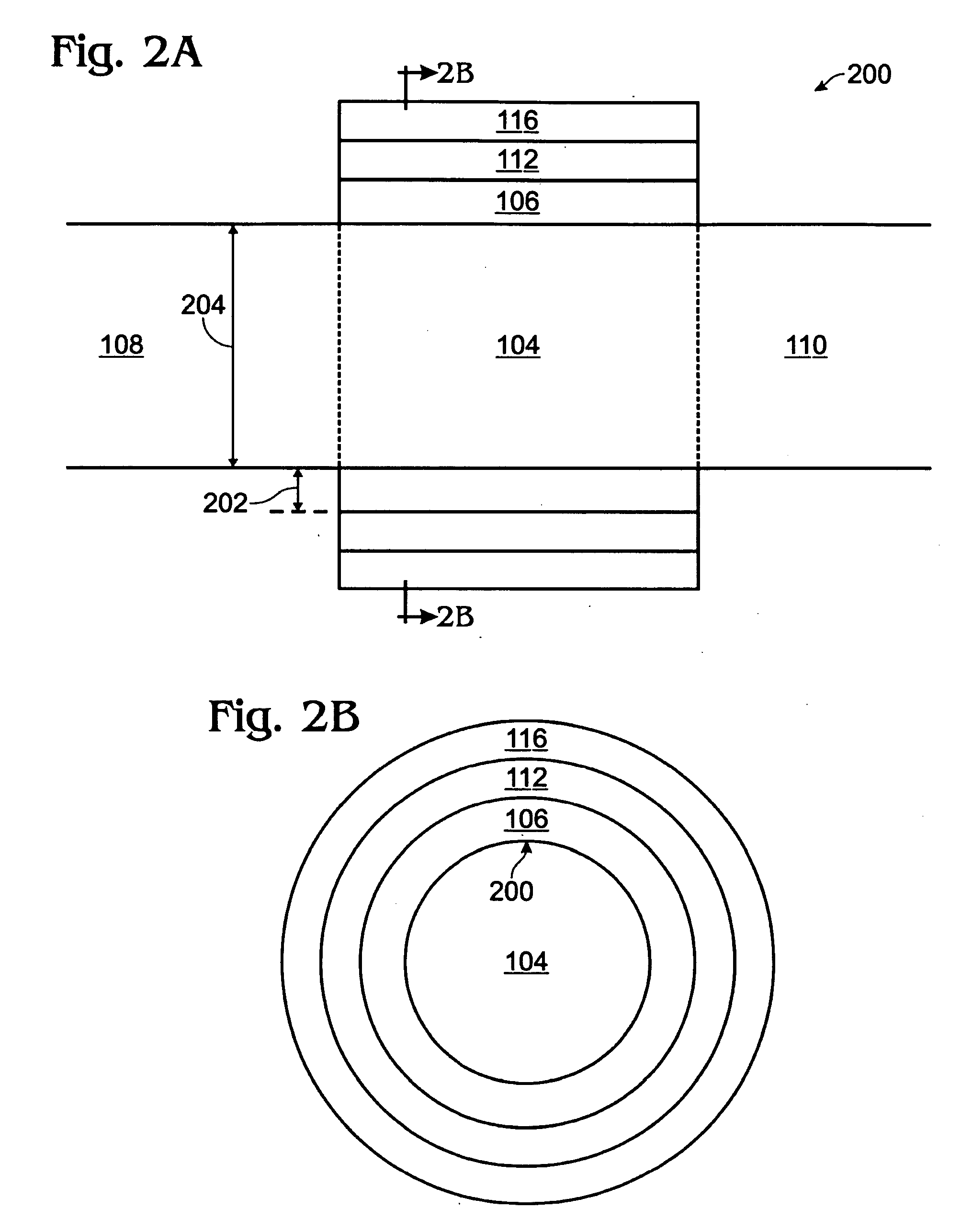Well-Structure Anti-Punch-through Microwire Device
a microwire and well-structure technology, applied in the field of integrated circuit (ic) fabrication, can solve the problems of poor wire diameter and length uniformity, adjacent wires only partially depleted, wires to be fully depleted, etc., and achieve the effect of greater yield, greater uniformity, and more growth conditions
- Summary
- Abstract
- Description
- Claims
- Application Information
AI Technical Summary
Benefits of technology
Problems solved by technology
Method used
Image
Examples
Embodiment Construction
[0020]FIGS. 1A and 1B are partial cross-sectional views of a well-structure anti-punch-through microwire device. The device 100 comprises a microwire 102 with alternating highly and lightly doped cylindrical regions, including a first dopant well-structure region 104. A channel ring 106 surrounds the well-structure region 104, between source 108 and drain 110 regions of the microwire. The source and drain (S / D) regions 108 / 110 are doped with a second dopant, opposite to the first dopant. For example, the first dopant may be n-type and the second dopant p-type. Alternately, the first dopant may be p-type and first dopant n-type. Thus, the microwire alternating highly and lightly doped cylindrical regions are either an NPN or PNP sequence.
[0021]A gate dielectric ring 112 overlies the channel ring 106. Typically, the gate dielectric ring 112 has a ring thickness 114 in the range of 10 to 60 nm. A gate electrode ring 116 overlies the gate dielectric ring 112.
[0022]FIGS. 2A and 2B are pa...
PUM
 Login to View More
Login to View More Abstract
Description
Claims
Application Information
 Login to View More
Login to View More - R&D
- Intellectual Property
- Life Sciences
- Materials
- Tech Scout
- Unparalleled Data Quality
- Higher Quality Content
- 60% Fewer Hallucinations
Browse by: Latest US Patents, China's latest patents, Technical Efficacy Thesaurus, Application Domain, Technology Topic, Popular Technical Reports.
© 2025 PatSnap. All rights reserved.Legal|Privacy policy|Modern Slavery Act Transparency Statement|Sitemap|About US| Contact US: help@patsnap.com



